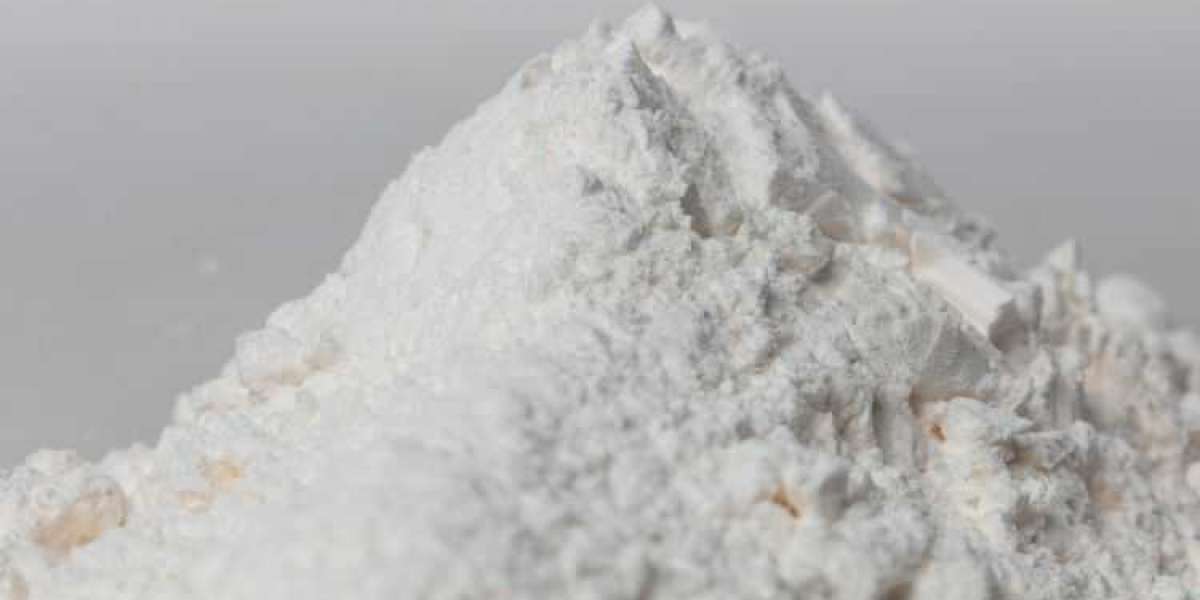The global pea starch market size attained a value of USD 436.90 million in 2023. The market is further expected to grow in the forecast period of 2024-2032 at a CAGR of 8.4% to reach USD 903.72 million by 2032. This significant growth is fueled by a rising consumer demand for clean label, natural, and functional food ingredients. Pea starch, derived from yellow or green peas, is emerging as a powerful player in this space, offering a unique set of properties and benefits that are revolutionizing the food industry.
Unveiling the Potential: Properties and Applications of Pea Starch
Pea starch is a versatile ingredient with a unique chemical composition and structure. Unlike its cereal counterparts such as corn starch, pea starch is naturally gluten-free and possesses superior functional properties. It excels in thickening, gelling, and film-forming, making it a valuable addition to a variety of food products.
Chemical Composition and Structure: Pea starch is primarily composed of amylopectin, a branched polysaccharide that contributes to its gelling and thickening abilities. This structure differs from the linear amylose structure found in cereal starches, leading to distinct functional properties.
Functional Properties: Pea starch shines in its ability to:
- Thicken: It creates a smooth and viscous consistency in sauces, soups, and gravies.
- Gel: Its gelling properties are particularly useful in puddings, jellies, and other desserts.
- Film-form: Pea starch can create edible coatings for products like fruits and vegetables, extending shelf life and enhancing texture.
These functional properties, combined with its natural and clean-label appeal, make pea starch a highly sought-after ingredient across various food categories.
A Culinary Canvas: Exploring Pea Starch Applications in Food Products
Pea starch's versatility extends to a wide range of food applications, transforming textures, adding stability, and catering to specific dietary needs. Here's a glimpse into its culinary influence:
Bakery Products:
- Bread and Pastry: Pea starch can enhance the crumb structure of bread and pastries, leading to a softer and more desirable texture.
- Gluten-Free Baking: As a naturally gluten-free ingredient, pea starch acts as a binding agent in gluten-free formulations, ensuring structure and stability in baked goods.
Confectionery:
- Gummies and Candies: Pea starch contributes to the chewy texture and smooth mouthfeel of gummies and candies.
- Coatings and Glazes: Its film-forming properties create attractive and protective coatings for candies and confectionery items.
Dairy Alternatives:
- Plant-Based Milk: Pea starch acts as a stabilizer in plant-based milk, preventing separation and creating a smooth and creamy texture.
- Non-Dairy Desserts: It plays a crucial role in creating a luxurious and decadent texture in non-dairy ice creams, puddings, and mousses.
Meat Products:
- Binders and Fillers: Pea starch can act as a binder in meat products, improving texture and reducing fat content.
- Coatings and Batters: Its film-forming properties create crispy and flavorful coatings for meats.
These are just a few examples, and pea starch continues to find innovative applications in various food categories.
Beyond Functionality: Unveiling the Benefits of Pea Starch
The advantages of incorporating pea starch into food products extend far beyond its functional properties. Here's a look at the key benefits it offers:
Clean Label and Natural: Consumers are increasingly seeking natural and minimally processed ingredients. Pea starch fits perfectly into this trend, appealing to health-conscious individuals.
Gluten-Free and Allergen-Friendly: Pea starch is naturally gluten-free and allergen-friendly, catering to individuals with celiac disease or gluten sensitivities.
Improved Texture and Mouthfeel: Pea starch offers a unique textural experience, enhancing the overall sensory appeal of food products. Its ability to create smooth, creamy, and chewy textures is highly valued in various applications.
Enhanced Shelf Stability: Pea starch contributes to extended shelf life by inhibiting microbial growth and preventing product breakdown.
These benefits, coupled with its functional versatility, make pea starch a valuable asset for food manufacturers seeking to create innovative and consumer-preferred products.
Market Trends and Growth Opportunities: A Look Ahead
The pea starch market is experiencing significant growth fueled by several key trends:
Increasing Demand for Clean Label and Natural Ingredients: Consumers are prioritizing transparency and natural ingredients in their food choices. Pea starch aligns perfectly with this trend, offering a clean-label solution for manufacturers.
Growing Market for Gluten-Free and Allergen-Friendly Products: The rise of dietary restrictions like celiac disease and gluten sensitivity is driving the demand for gluten-free alternatives. Pea starch serves as a valuable ingredient in this growing market segment.
Expansion of Pea Starch Production and Availability: As the demand for pea starch increases, production capabilities are expanding globally. This ensures greater availability and affordability for food manufacturers.
Future Outlook: A Sustainable and Functional Future
The potential of pea starch extends beyond current applications. As research and development efforts continue, we can expect to see further innovations in pea starch technology and utilization. Here's a glimpse into the exciting future:
Potential for Further Innovations: Research is ongoing to explore new functionalities of pea starch. This could lead to novel applications in various food categories, further expanding its reach.
Continued Growth of the Pea Starch Market in the Food Industry: With the aforementioned trends driving demand, the pea starch market is poised for significant growth in the coming years. This growth will be fueled by the increasing adoption of pea starch by food manufacturers.



